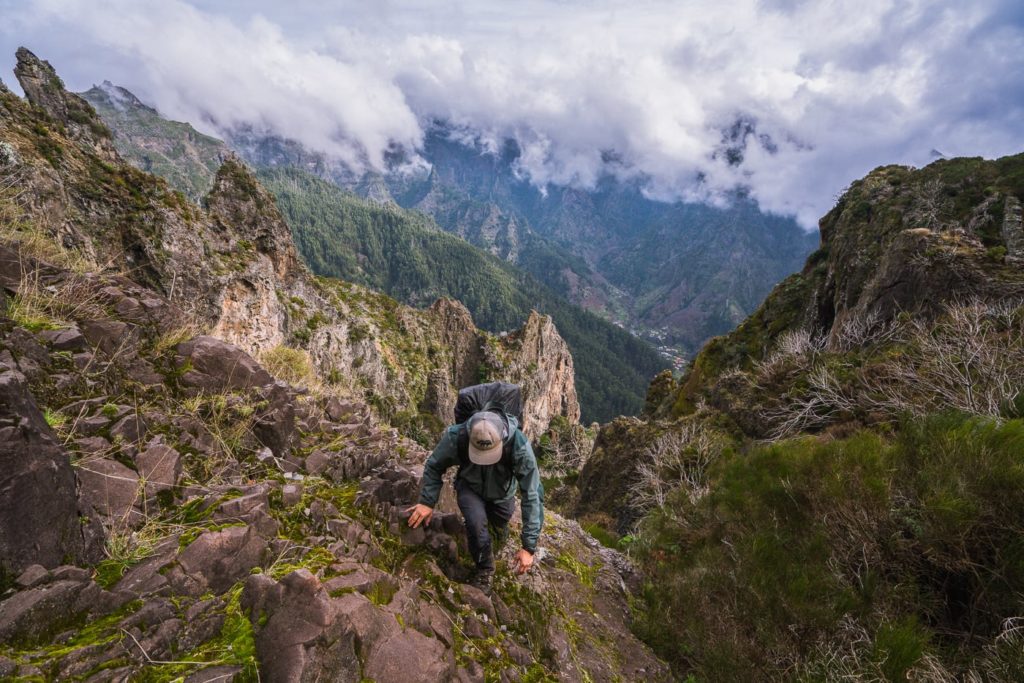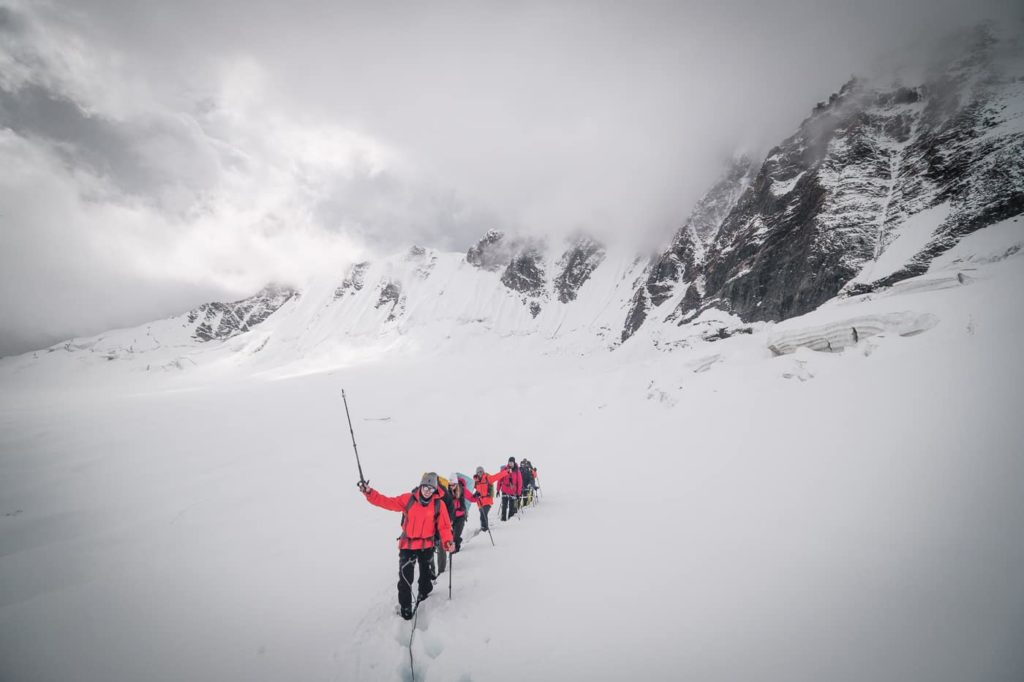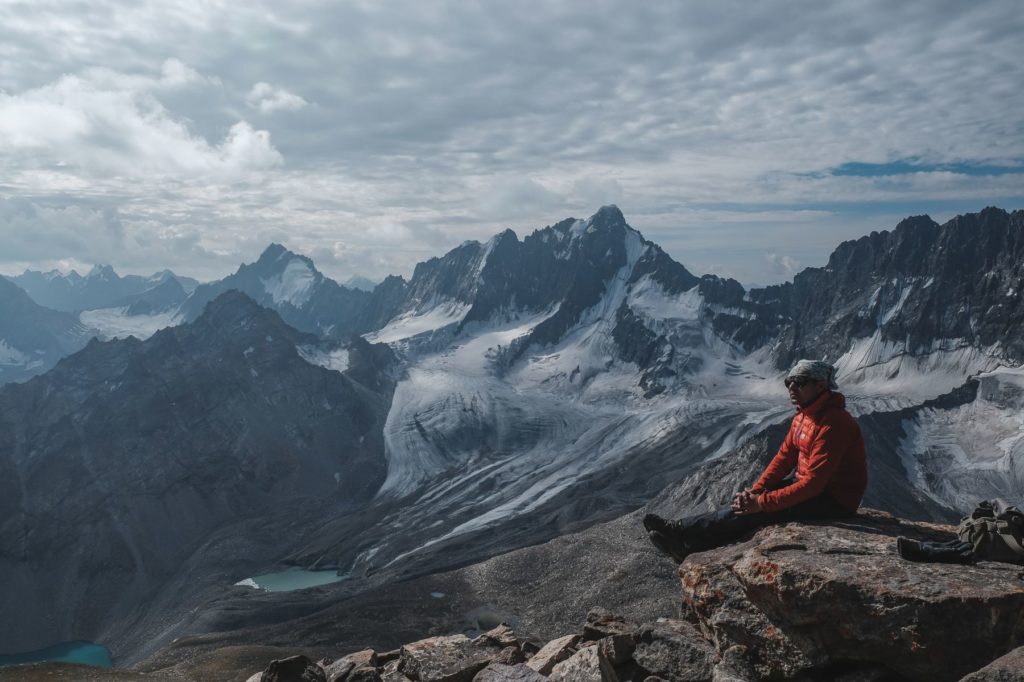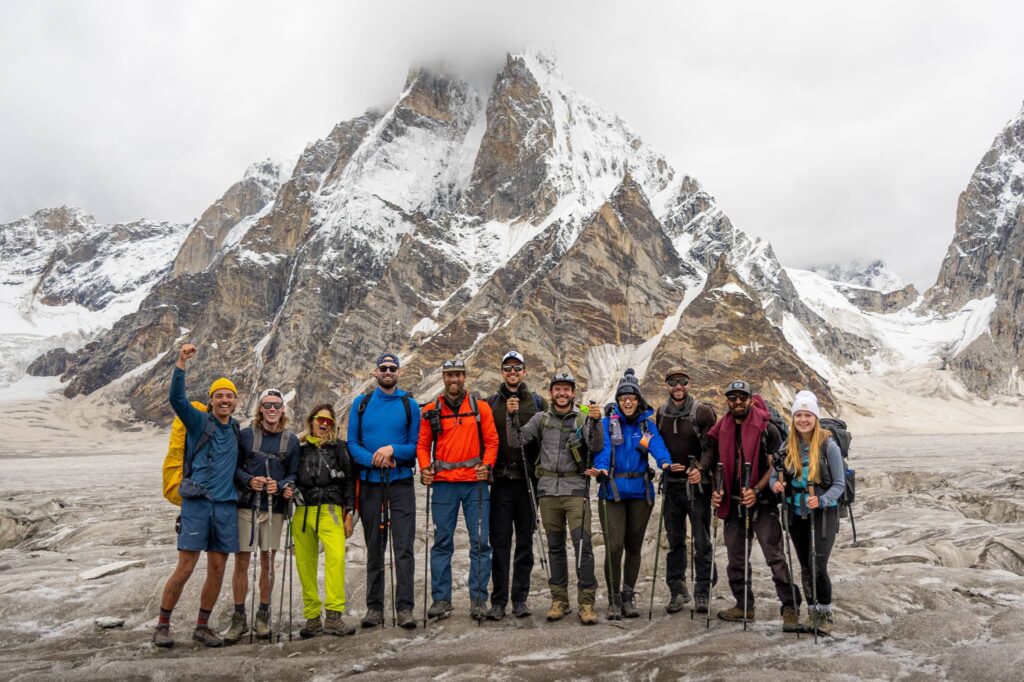Madeira might be the most exciting island that you’ve never heard of.
Located just a stone’s throw away from North Africa, this tiny spit of land is one of a kind, offering European amenities in a truly off-the-beaten-path, rugged setting. It’s not totally of the maps but is just remote enough to have its own thing going for it.
For those who have no idea what to expect, there is a ton of things to do on Madeira, and not just what you hear about when you first arrive! Yes, Pico Ruivo is a must-visit and you simply can’t miss the sunrise at São Lourenço but it would be a shame to stop there.
In this journal entry, we’re going to share some alternative things to do Madeira that you may not have heard of yet, like canyoneering, distillery tasting, surfing, and more. After all, Madeira’s hidden gems are what really shine and make this island so special. So let’s find out what they are!
1. Learn about (and drink) local poncha
Although is Madeira is famous for its sweet wine, there’s another local spirit that we tend to prefer. Historically, as one of the largest producers of sugarcane in Europe, rum is easy to make and pretty damn good.
So what does one do with so much rum? Add more sugar, some juice from local fruit, stir, and call it good. And thus, the poncha was created.
Like the Brazilian caipirinha, poncha is powerful and often deceivingly simple. A few of these may seem reasonable but underestimate them and you’re sure to be stumbling through the streets.
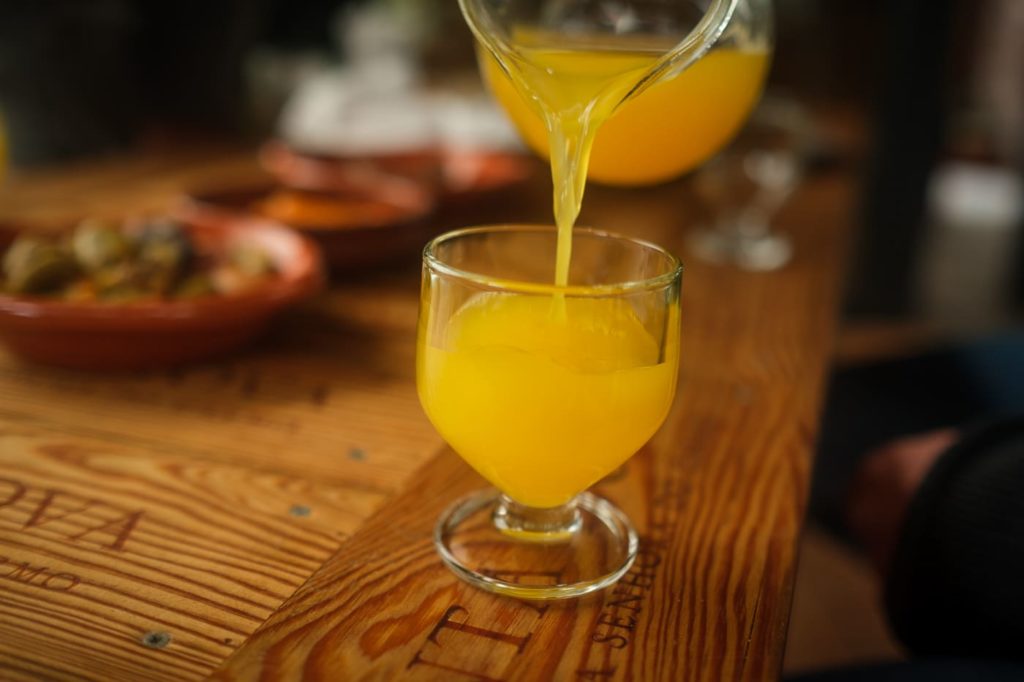
Make no mistake either: there is definitely a proper way to make a poncha and one requires specific ingredients and a certain technique as well. This isn’t your run-of-the-mill rum and pineapple: these drinks require insider knowledge to make.
One of the best places to dive into the history of Madeiran rum and sample some poncha is the Engenhos do Norte or North Mills Distillery. It is one of the last remaining rum producers on the island and a time capsule for the process. We stop over here on our Madeira walking tours, but not before having lunch at one of our favorite bars on the island.
2. Walk in the footsteps of kings
Before there were cars and paved roads, there were simply trails. This is especially so in the case of Madeira, whose landscape is so dramatic that they could barely even make paths wide enough for a horse, let alone one with a carriage.
The Caminho Real was a gift from the King of Portugal to the people of Madeira in the 19th Century. He commissioned the pathway in the 19th Century to make getting around the island easier for its people.
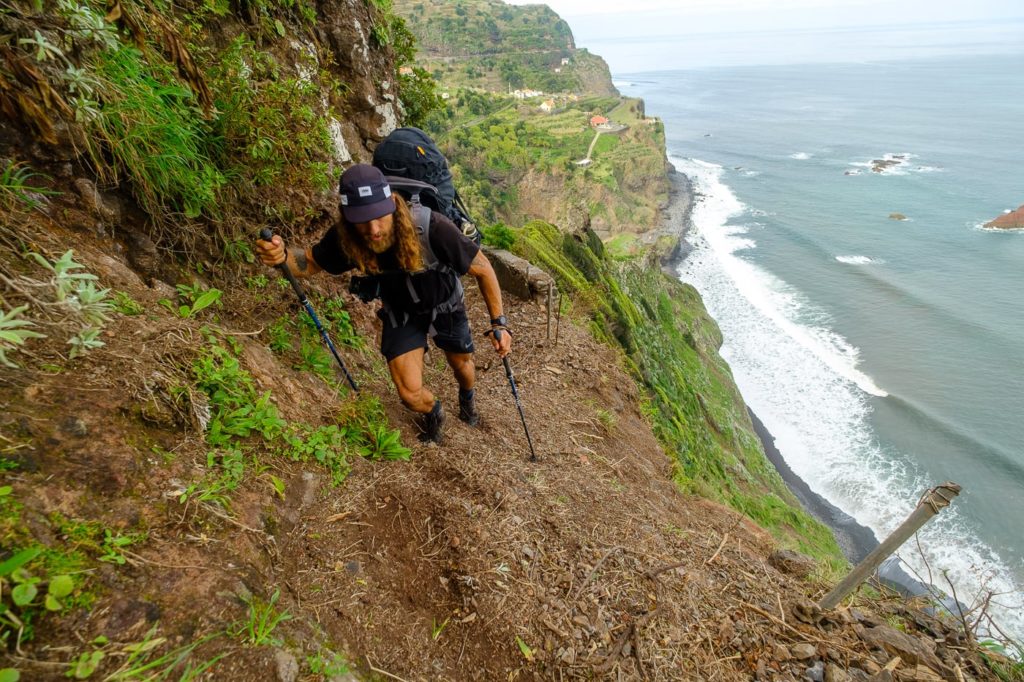
Technically a series of trails and not just one single path, the Caminho Real circumnavigates the entire island connecting the tiny communities that dot it. At 170 km or roughly 100 miles in length, it is an extensive network and quite the feat of human engineering.
Nowadays, the caminho is used less for getting around the island and more for leisure. Given its extensiveness, it makes for a great hiking trail and features some of the most beautiful scenery on the island. One can tackle it either piecemeal, knocking off different sections at a time, or all at once in one big circular hike. If you choose the latter, you will need to be fit and prepared to do some trail-finding as the route is not maintained in some places.
3. Get off the beaten path
Hiking is already one of the most popular things to do in Madeira. There are a ton of trails around the island that feature some of its most iconic scenery including laurel forests, coastal cliffs, and jagged interior peaks.
Among the most famous walks on Madeira are Pico to Pico, Vereda da Ponta de São Lourenço, and Risco Waterfall.
But there are a ton more places to hike on the island than these few. In fact, some of the most beautiful places in Madeira are barely even mentioned in any guidebook you’ll find, let alone the run-of-the-mill listicle that you find online.
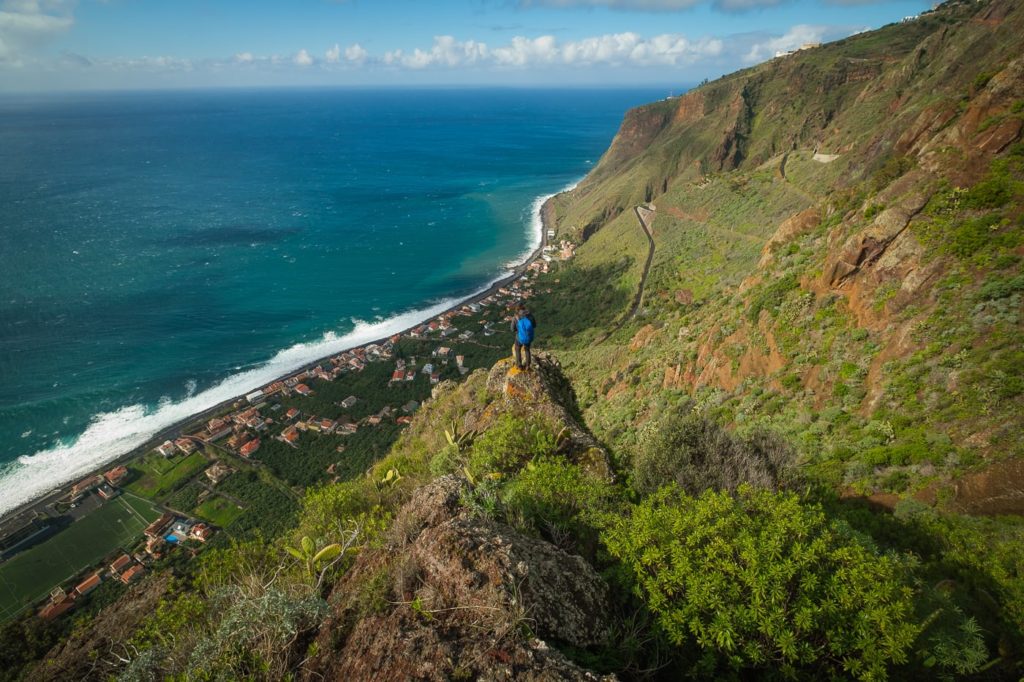
We’re talking about traversing knife-edge ridges on the coast, scrambling up spires in the mountains, and paths through the woods long forgotten, even by the locals. The only reason we know about places like these is from doing our own due diligence and knowing the right people on the island.
We’d love to talk more about these hidden gems and even more so to show you what we’re talking about. Much of our Madeira trekking tours features these remote trails and definitely NOT those usual walks that everyone does. If you’re interested in going off the beaten path with us, you should definitely reach out!
4. Discover forgotten levadas
A levada is very Madeira and are found only here.
Because of Madeira’s unique topography and climate, most of the rainfall falls on the northern half of the island, leaving the south quite dry. Thus, levadas were built to ferry water around. Without these aqueducts, it would have be difficult to have agriculture in the south, let alone any settlements or cities like Funchal.
With modern infrastructure, levadas are less necessary for irrigation and drinking water. But that being said, people are still getting some use out of them.
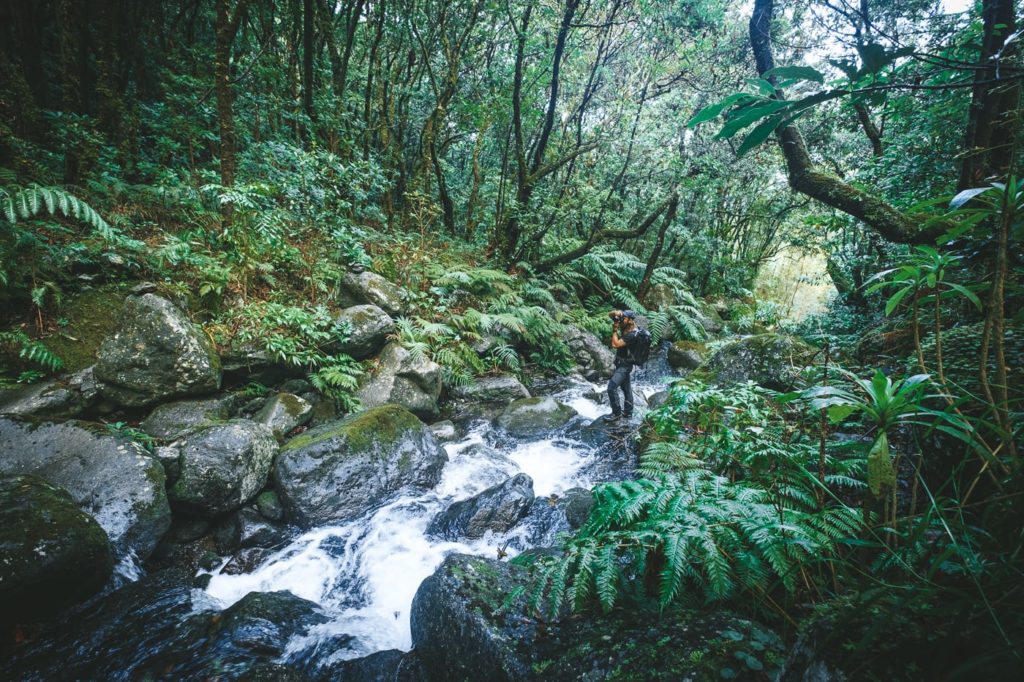
Nowadays, levadas make for great alternative hiking trails. They’re often located in totally remote locations, penetrating deep into the valleys, and can sometimes be quite dramatic. We’ve walked along some that are carved directly into cliffsides, water still running through them, only to find a hidden waterfall along the way.
Levadas were, and still are to this day, vital to the Madeiran way of life. They may not be as critical to survival but they make for a great way to pass the time and get closer to the island’s roots.
5. Sample tuna sashimi at the mercado
It should go without saying that as an island, Madeira benefits from some very fresh seafood, and this is true of course.
But did you know that you can find some of the best tuna in the world here? No joke, buyers travel to Madeira from all across the world to sample some and claim the best for themselves.
There is no better place to try the catch of the day than the Mercado dos Lavradores. An entire wing is dedicated to the fishmongers, and they have no problem handing out samples. See a good hunk of tuna and simply ask them to cut off a morsel; they’ll slice a piece off right there for you to try. All that’s missing is a little wasabi and soy sauce to dip it in.
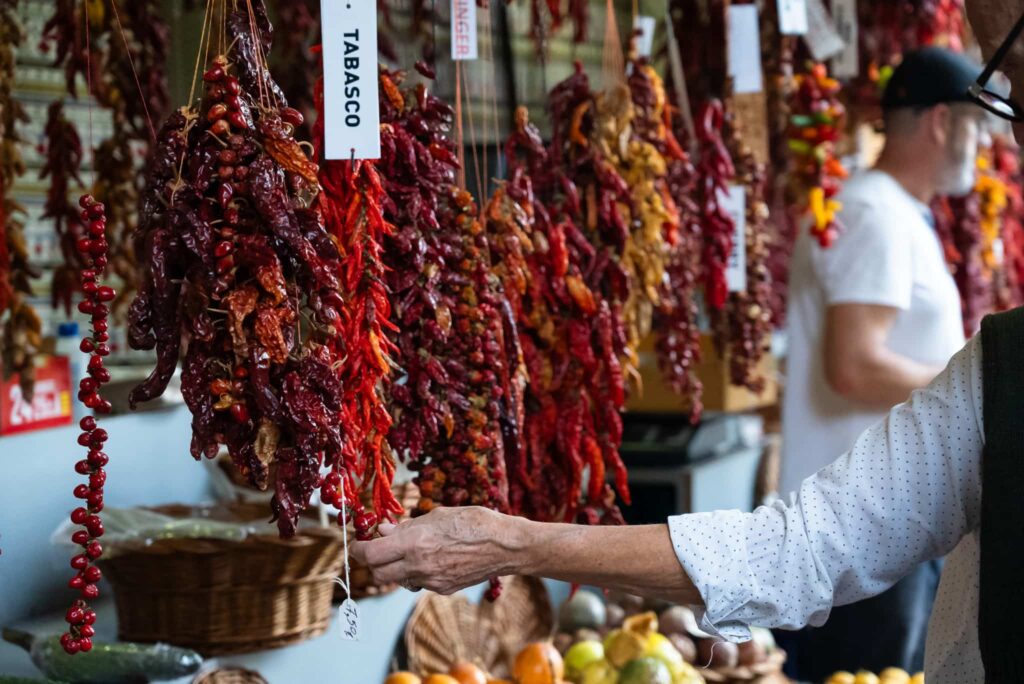
Aside from tuna, you can find many other types of seafood at the market, like marlin, snapper, and scabbardfish. There are also separate sections for produce, flowers, and artisan products, as well as a few eateries to relax at. We recommend arriving as early in the morning as possible to get the freshest stuff but feel free to spend the entire day here.
6. Have a Madeiran BBQ
Remember this word and burn it into your mind: espetada. The Portuguese’s own version of “skewered meat,” Madeira does it in its own unique way, and it may be one of the best versions we ever had.
Madeiran espetada is usually made with beef or pork although tuna is still common and is a real treat. The meats are seasoned lightly and then cooked over hot cools or (preferably) in a brick oven similar to an asada. Seems familiar right?
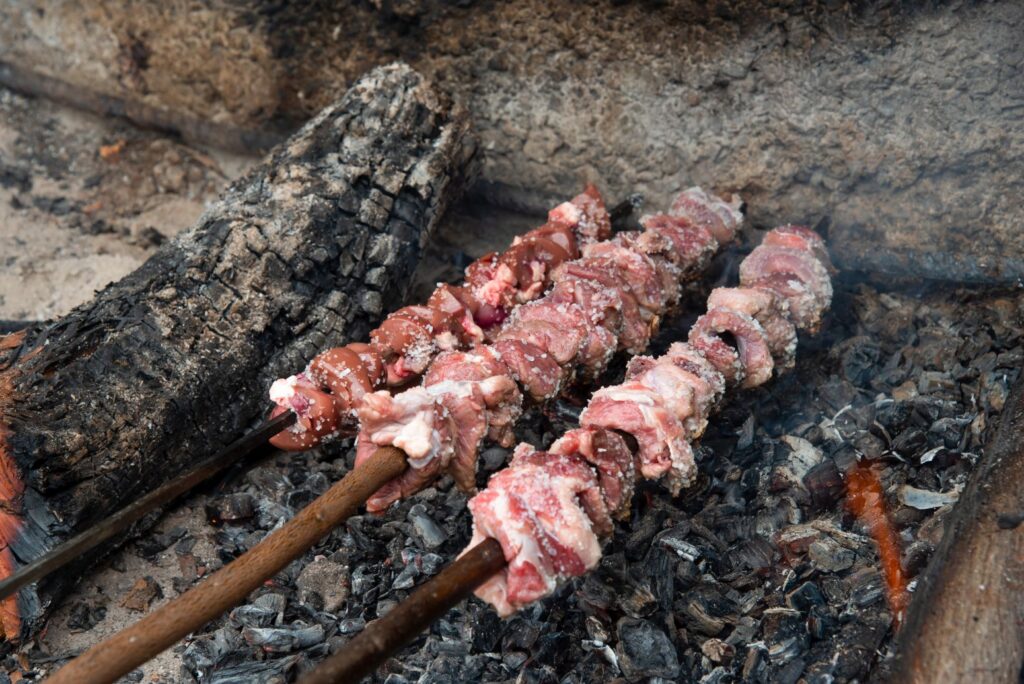
What makes the local variety so special though is the skewer. Often hewn and taken right from the backyard, Madeirans only use pieces of laurel for their meats. This aromatic wood imbues the meats with a particular flavor that’s hard describe, other than delicious.
That’s not the end of the Madeiran barbecue either. Cooked alongside espetada is always copious amount of bolo do caco: a dense bread that is often grilled with lots of butter and garlic. Grab a hunk and slide a meaty espetada through it to make a gut-busting Madeiran shawarma.
7. Soak in a tidal pool at Seixal
Aside from Porto Santo (which we will cover later), Madeira Island isn’t exactly a beach-y place to visit. Contrary to what many might think, there’s just not a ton of sandy spots on the island – most of its coast is rocky and what beaches do exist are usually pebble or cobblestone.
Despite the lack of the usual powdery pillows, Madeirans still can’t be stopped from lounging near a large body of salty water. Rather than lay directly on the beach, some prefer to visit one of the many tidal pools around the island. Some are man-made, while others are actually 100% natural.
Ready to find the lost treasures of the Atlantic?
The most famous natural pools on the island are in Seixal and visiting them is among the most popular things to do in Madeira. Cut from sea stacks and shaded by stone arches, these pools are immensely photogenic and pretty cool to see. The spot isn’t totally undeveloped either: there are concrete steps leading down to the pools, making for easy access.
Aside from these natural pools, Seixal itself is also a great spot to spend time in. There’s another beach inside the port, which is actually one of the few sandy ones on the island, and some cool little bars around. The landscape around Seixal is also quintessential Madeira: dramatic, lush, and extremely beautiful.
8. Circumnavigate the island
Madeira is not a big place. In fact, with a rental car, one could conceivably drive around the entire island in 3 hours if they didn’t stop.
Despite its small size though, Madeira is an incredibly diverse place geographically. No corner of the island is the exact same and there are a ton of places to discover along the way.
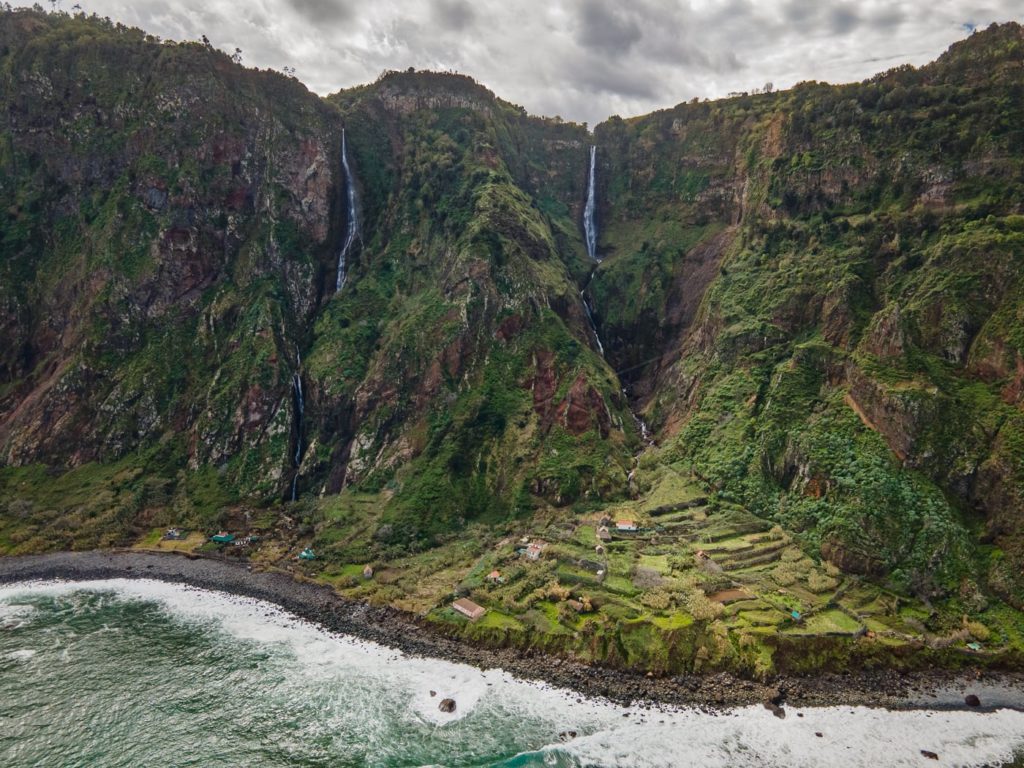
The southern part of Madeira is the “sunny” side of the island, typified by tropical groves, warm waters, and bustling town squares. The north coast, on the other hand, is a much moodier place: stormy, dramatic, with far fewer people. And between these two sides, you have the central mountains with their lush laurel forests and jagged, volcanic peaks.
We highly recommend taking some time to get lost on the island and follow its many random roads. You’ll be surprised at how much you will find in such a small place.
9. Getaway to a desert beach
Porto Santo is practically the polar opposite of the island of Madeira, and it’s only 70 km across the water! Because of its topography, which is almost totally flat, it receives a fraction of the rainfall as mountainous Madeira, making it quite sunny and dry. Chances are you don’t need to include a jacket on your packing list here.
Because of Porto Santo’s altered climate, its beaches are much more what you’d expect from an “island getaway.” Fine, powdery sand rings most of the island and the water is the same brilliant turquoise that you might expect from the Mediterranean. A handful of resorts dot the island, serving up luxury accommodations and experiences.
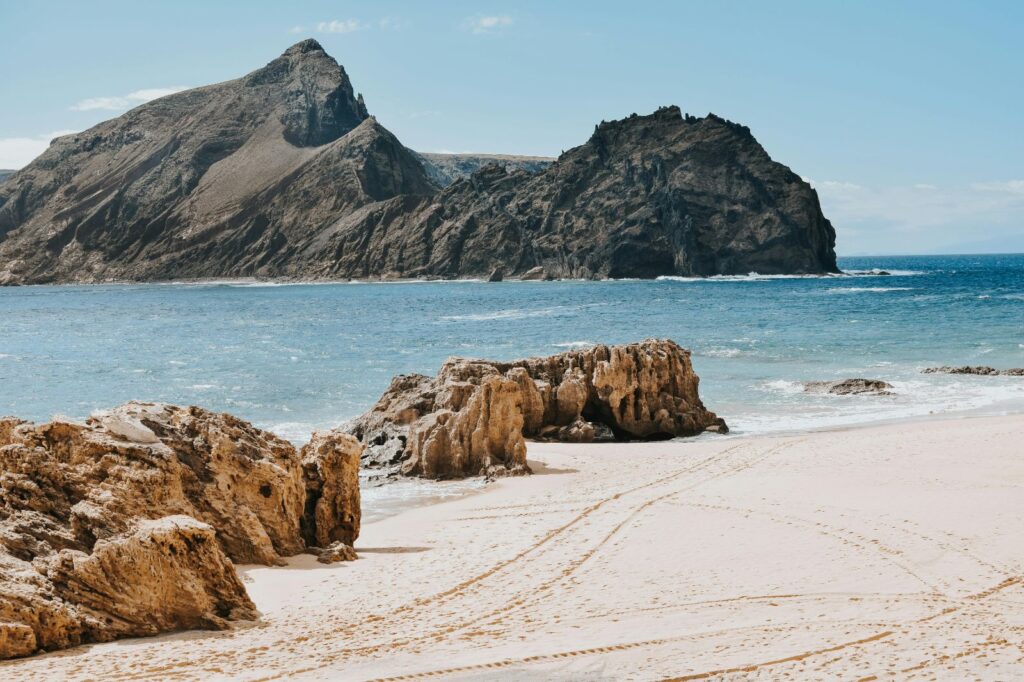
Among conventional beachgoers or holidaymakers, Porto Santo is far more preferable to more temperate, rustic Madeira Island. That being said, the former is even smaller than Madeira and, outside of the aforementioned resorts, pretty undeveloped. There’s not a ton to do on the island besides lounge on the beach, but if that’s what you’re truly looking for then this desert island may be perfect for you.
10. Enjoy world-class fishing
We’ve already mentioned how quality the tuna is around the island, but that’s not where the catch ends. Madeira offers some of the best deep-sea fishing in Europe actually and offers chances to angle some pretty impressive specimens, none more prestigious than the blue marlin. In fact, Madeira might be the best place in the world to catch this fish!
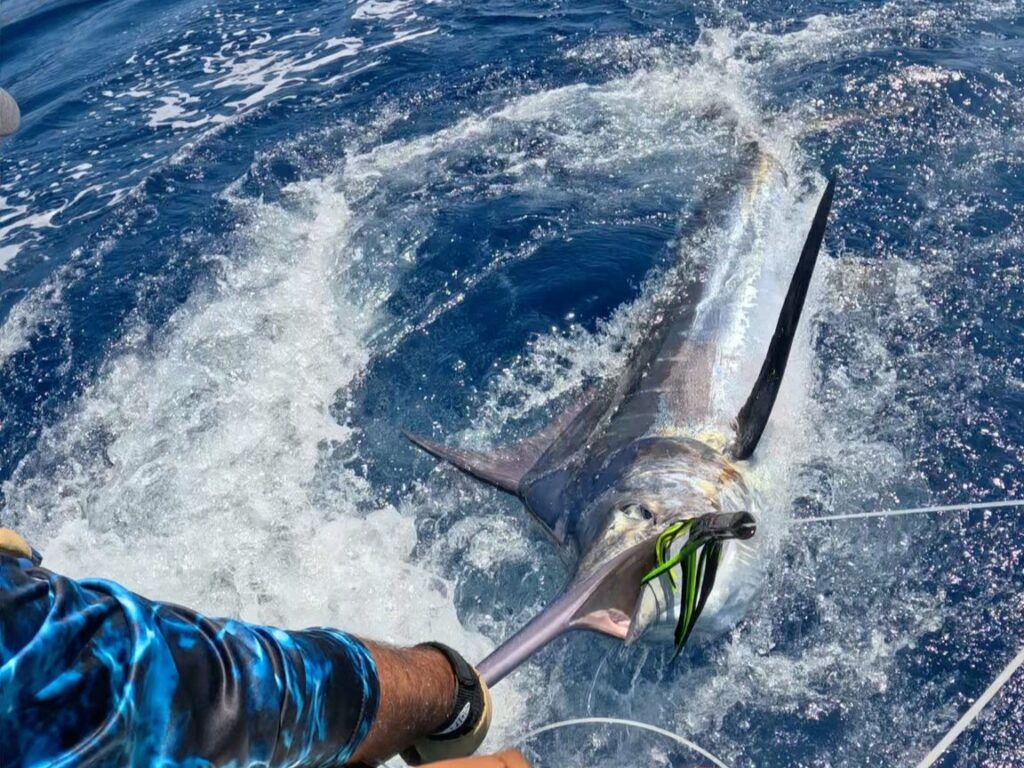
There are lots of opportunities and ways to get out on the open seas. The best time of year is usually spring and autumn when the fish are migrating, which also coincides with the best time to visit Madeira. There are organized trips on larger charters and boats that you can arrange, but we prefer hiring a smaller, private boat with an experienced, local fisherman.
We recommend reaching out to local legend Josef (Whatsapp: +351 927 846 195) for private fishing trips. He’s caught more than his fair share of marlin and has competed in several local competitions.
11. Brave the breakers
Where there are waves, there are sure to be surfers, and Madeira is no exception.
The surf here is not to be taken lightly. Madeira is infamous for difficult and (more often) dangerous conditions: sharp reefs, rocky bottoms, hectic entries and exits, and massive Atlantic swells. Outside of a few sheltered spots, which are mostly around Porto da Cruz, beginners will have trouble finding suitable places to surf.
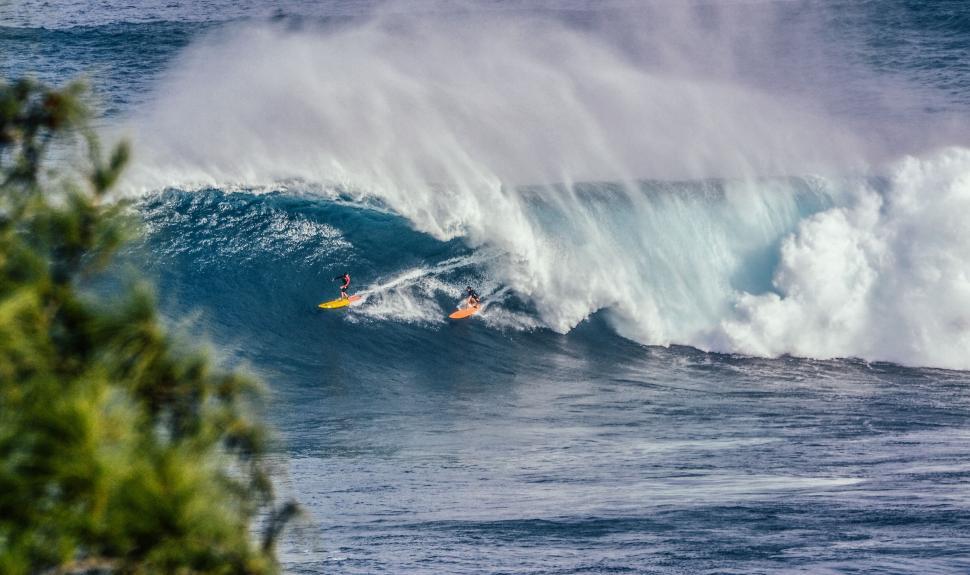
For more seasoned riders though who are ready and able, there are some epic opportunities. Jardim do Mar is considered one of (if not the best) big wave point breaks in the world that can hold up to well over triple overhead. Nearby Paul do Mar demands a ton of speed but can offer barrels over shallow stones. Both spots can seriously crush you though if you underestimate them (just read William Finnegan’s account of the island in his legendary surf novel).
Such wave quality also breeds localism. Madeiran surfers can get quite territorial, especially when the best spots are working, and will hound strangers if given the opportunity. So no dropping in or funny business here: respect the locals like you would anywhere else.
12. Discover “hidden” Madeira
Unlike the Canaries, Madeira is still relatively undiscovered by the masses. Yes, there a few things that can still be considered “touristy” or “spoiled” but there is a lot more to do on Madeira.
While we cannot fault someone for wanting to do the immensely busy Pico to Pico walk or visit the ever-popular pools or Seixal, we highly recommend focusing on the lesser-knowns parts of the island. There is just so much to do on Madeira and so much to explore that it would be shame to restrict yourself to the norm.
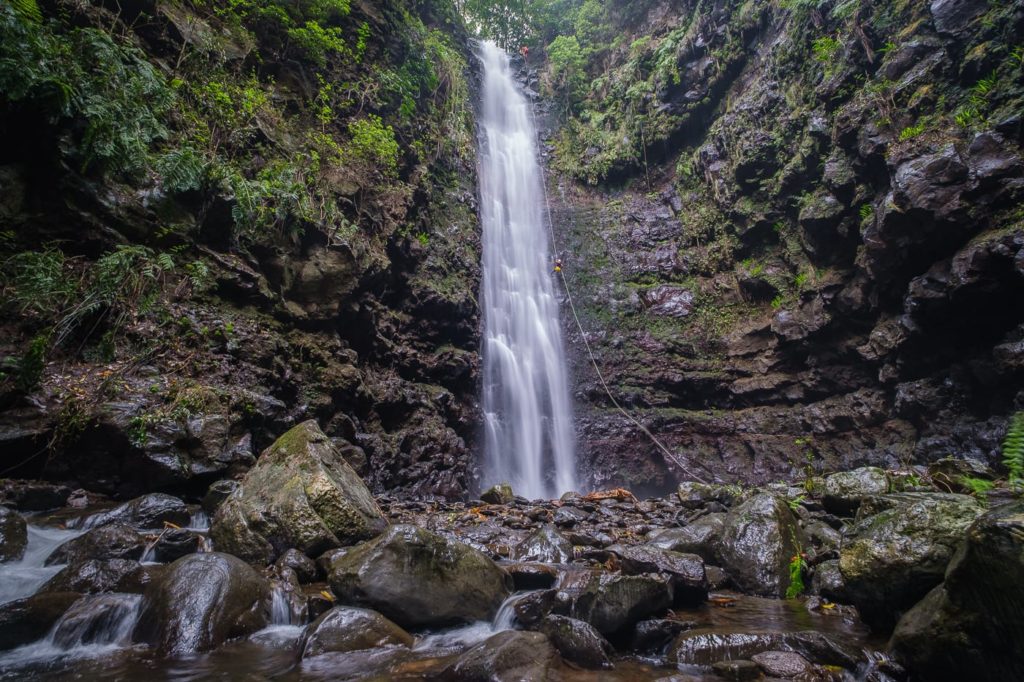
If you’ve read through every single thing to do on this list and still don’t know where to begin, then consider enlisting the help of some experts. As residents of the island, we know a thing or two about getting the most out of it. We organize numerous tours in Madeira each year and never get tired of sharing this amazing island with visitors. We’re also discovering new locations all the time so things just keep getting better!
Reach out to us today and discover the REAL best things to do on Madeira!

